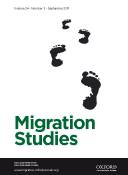This article engages critically with the insider–outsider divide in research with migrants and advocates a more nuanced and dynamic approach to positionality. In migration research, the insider–outsider divide typically assumes a specific form: an insider researcher is a member of the migrant group under study, whereas an outsider researcher is a member of the majority population in the country of settlement. This divide is a discursive reality that researchers must relate to, regardless of its analytical merits. Our analysis builds on the authors’ experiences in twelve different fieldwork situations, where research was often conducted from hybrid positions that did not fit the archetypal insider–outsider divide. First, we discuss the relational construction of insider–outsider divides in migration research, focusing on the interplay between researcher characteristics and particular social contexts. Second, we address the specific characteristics or markers through which researchers are interpreted and positioned. These markers differ in terms of their visibility to informants, and in the extent to which researchers can modify them or communicate them selectively. Third, we examine how these characteristics are actively managed in fieldwork settings. Fourth, we identify five types of ‘third positions’ in migration research, positions that deviate from the archetypal insider–outsider divide: explicit third party, honorary insider, insider by proxy, hybrid insider-outsider, and apparent insider. The article explores some of the advantages and challenges inherent in different positions and argues that strategic and reflexive management of positionality should be included in ethical considerations about the research process.
Carling, Jørgen; Marta Bivand Erdal & Rojan Tordhol Ezzati (2014) Beyond the Insider–Outsider Divide in Migration Research, Migration Studies 2 (1): 36–54.











